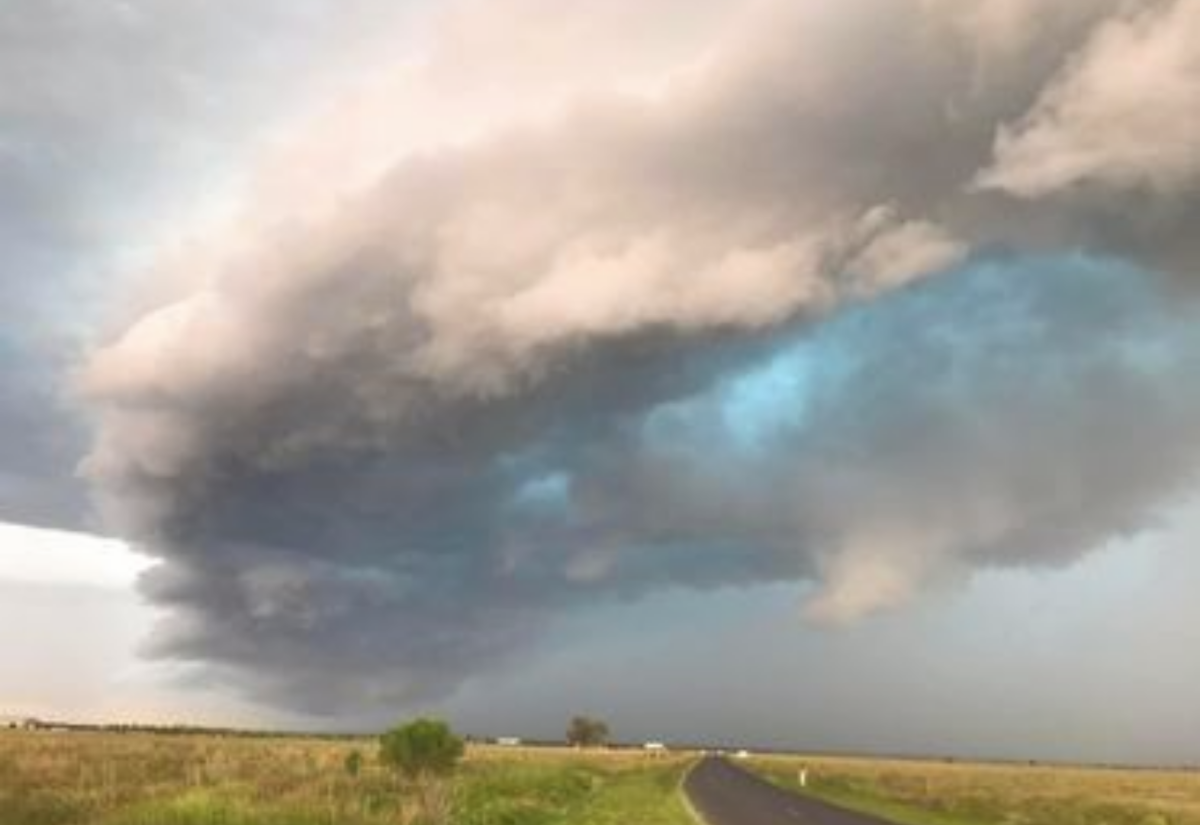Fire risk continues despite recent rainfall
Oliver Brown
13 December 2021, 8:09 AM
 Recent rainfall has not removed the fire risk across the west. Photo taken by Stuey Lloyd near Coonamble.
Recent rainfall has not removed the fire risk across the west. Photo taken by Stuey Lloyd near Coonamble.A GRASS fire on the Coonamble to Carinda Road last week has led to a reminder from the North West Rural Fire Service that wet weather does not completely eliminate the risk of bushfires or the need to be prepared and vigilant at this time of year.
The fire started only a few kilometres west of Coonamble and was reported to local brigades shortly before 9pm on Tuesday 7 December, despite rainfall in the area from storms the previous evening.
Acting District Manager with the North West RFS Michael Robinson said lightning strike was the suspected cause of the blaze.
"The call came in at around 8.45pm and a combination of RFS and Fire and Rescue NSW crews extinguished it within about 15 minutes," Mr Robinson said.
"It shows despite all the rain we've had, there's now a lot of vegetation which can quickly dry out and be potential fuel for starting a fire."

*Photo courtesy Stuey Lloyd, taken from the Coonamble - Quambone Road on the evening of the grassfire 7 December.
NSW is now a couple of months into the statutory bushfire danger period for the year between 1 October and 31 March, although these are subject to change depending on location and local conditions.
During this period, residents are allowed to undertake burns but only with a permit under pre-specified conditions such as wind speeds, local control measures and average local temperatures.
Mr Robinson confirmed the recent rainfall had reduced the immediate risk for bushfires at this time of year, however he said this would likely creep back up again in the new year and we should not be complacent.
"The risk is still there - we now have plenty of vegetation and will continue to see increased growth and, as hotter weather returns, that will dry out which increases the potential for bushfires into January and February," he said.
This prediction is backed by the Australasian Fire and Emergency Service Authorities Council (AFAC), which released its Bushfire Seasonal Outlook for Summer 2021 last month.
Developed in partnership with several weather, fire and emergency organisations from across the country, the AFAC outlook suggested the La Niña event, which has resulted in above-average rainfall in recent months, would likely end in early December.
Even if this does occur, the outlook has also predicted the December to February quarter will see above normal fire potential for areas containing crop or grassland fuels as the good growing conditions persist.
With harvest delayed by the wet weather, countless farmers have been unable to remove much of their summer crop and as harvest drags on, the fire risk can rise if high crop loads coincide with the peak of summer.
Mr Robinson said now was the time for local property owners to make sure they were fully prepared for bushfire season and had done any necessary hazard reduction works.
"You still need to reduce all excess vegetation around your properties and make sure your gutters are clear - this will eventually dry out when it gets hotter, so there is still that potential to serve as fuel," he said.
"Despite the cooler times and large amount of water around, we urge people to have a bushfire survival plan and review that in preparation for when the area dries out - you have no idea when a fire could start and always need to be prepared.
"This includes checking over all firefighting equipment you have at home and make sure everyone in your household knows how to use that."
RFS crews also conduct their own hazard reduction works all year round, including slashing and brush cutting of excess vegetation around communities and hazard reduction burning depending on weather conditions.